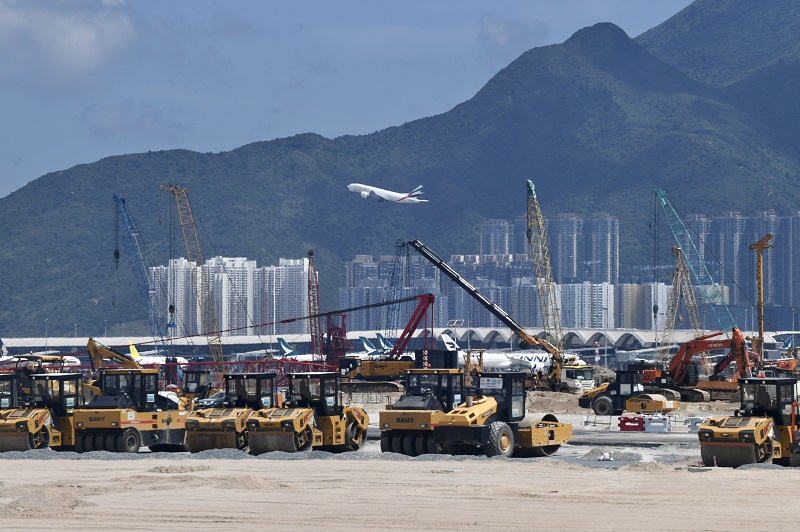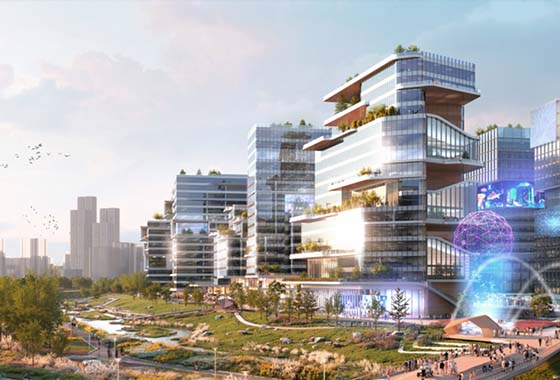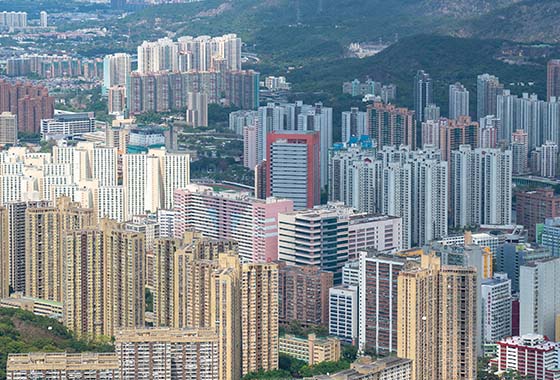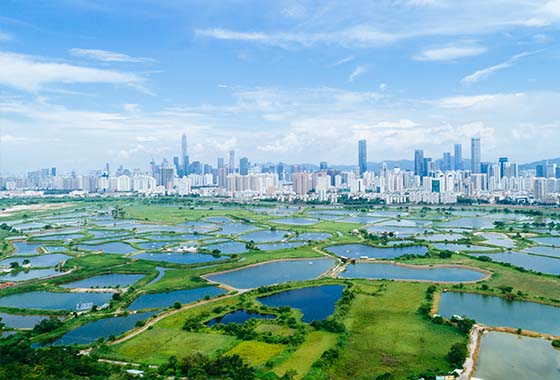How Hong Kong’s third runway reclamation success can aid the city’s housing effort
This article appeared originally in the SCMP on 27 Oct, 2021.
Authors: Ryan Ip, head of land and housing research and Jacqueline Hui, researcher at Our Hong Kong Foundation

The Airport Authority announced the completion of tarmac works on the third runway at Hong Kong International Airport last month. This large-scale reclamation project involved 650 hectares of land but only took five years, highlighting the efficiency of reclamation as a land development option.
Not only does the three-runway system strengthen Hong Kong’s status as a leading aviation hub, it has also boosted the Lantau Tomorrow Vision, which has been criticised over the large scale of reclamation. So, what can we learn from the success of the runway project?
The whole scheme covers many aspects, including reclamation of land equivalent to more than twice the size of Cheung Chau Island and the construction of the third runway. Construction work began in 2016 and, after five years, reclamation is almost complete.
The 3.8km runway finished pavement works in September and is expected to go into use next year, with the entire runway project expected to be finished in 2024. With a fully operational third runway, the airport is expected to be able to handle around 100 million passengers, 9 million tonnes of cargo and 600,000 flight movements yearly by 2030.
While the pandemic has dealt a big blow to the aviation industry, the path to recovery for the sector is in sight. According to a recent forecast by the International Air Transport Association, airlines across all regions will see sharply lower losses next year as international travel demand surges and vaccination rates climb.
For Hong Kong, while the airport recorded a large drop in passenger traffic, cargo volumes remain comparable to pre-Covid-19 levels.
Moreover, as the 14th five-year plan supports Hong Kong’s effort to solidify its status as an international aviation hub, passenger traffic is expected to bounce back strongly when the border reopens. Therefore, even with the current short-term difficulties, we must continue to create air traffic capacity and be prepared for the future.
In view of the public’s concern about the environmental impact of reclamation, the third runway project adopted a new method to strike a balance between construction and conservation. That included the use of deep cement mixing technology, a non-dredge reclamation method.
Compared to conventional reclamation, deep cement mixing does not require the removal of marine mud. That means the potential leakage of silt can be prevented by minimising the release of marine sediment, mitigating the impact on nearby water quality and marine ecology. And with no disposal and transport of mud required, marine traffic can be reduced, cutting carbon emissions.
In addition, the time taken for sludge settling is reduced with this new technology, providing a large piece of developable land in only a few years.Given its reduced environmental impact and higher efficiency, deep cement mixing has also been used for the Tung Chung New Town Extension. Planning began in 2011 and reclamation work started in 2017 using the non-dredge method.
The new method helped avoid the dumping of 4.4 million cubic metres of marine mud and a resultant 17,600 vessel trips. Reclamation works have taken less than three years, and the first piece of land for public housing was passed to the Housing Authority last year. The first group are due to move in by 2024, only 13 years after the planning stage.
The Tung Chung extension has outpaced other new development area projects, which started earlier in the New Territories. For example, the government started planning the Kwu Tung North and Fanling North development in 2007.
As it involved land resumption, compensation negotiations, relocation for affected residents and land clearance, construction could only begin in 2019. The first group of public housing tenants is expected to take up residence in 2026, two years after those moving to the Tung Chung extension.
Completion will take around 19 years from the planning stage, six more than for the Tung Chung extension, showing how reclamation can save time and effort in negotiations and when relocating occupants.
Sand supply is another public concern. A lack of sand led to delays and cost increases during the work for the third runway before the Airport Authority found extra sources of the material.
In addition to importing marine sand from Guangxi, the project made use of artificial sand and local construction waste. Meanwhile, the use of deep cement mixing helped save time and reduce demand for fill materials, keeping construction on schedule.
Although the scale of reclamation for the Lantau Tomorrow Vision is much larger, fill resources will not be an issue if the government manages the construction schedule and utilises local construction waste well.
Hong Kong generates more than 15 million tonnes of construction waste each year. Most of this is sent to Taishan, in Guangdong province, but can be used as fill material in reclamation.
The Development Bureau estimates that local construction waste could account for about half of the reclamation materials needed for the Kau Yi Chau Artificial Islands, helping lower costs.
The completion of the third runway tarmac works opens a new chapter for Hong Kong’s aviation industry. With the mainland’s support, and given Hong Kong’s unique geographical location and top-notch service, the city will become a stellar international aviation hub.
Moreover, the successful adoption of deep cement mixing in the third runway project to balance construction and conservation needs is a good model for future reclamation works. The government would do well to promote such projects so the benefits of reclamation in land creation become widely acknowledged.



